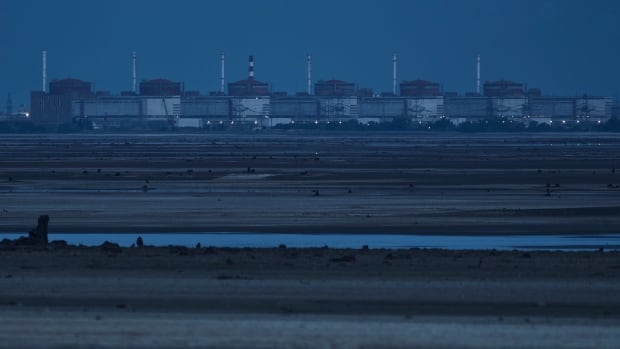Both Russia and Ukraine have warned this week of purported plans by the other to attack the Zaporizhzhia nuclear power plant.
Ukrainian President Volodymyr Zelenskyy said Russia could try to make it look as though Ukraine was shelling the nuclear plant, while Kremlin spokesperson Dmitry Peskov suggested “the Kyiv regime” could stage a “catastrophic” provocation there.
On Thursday, Russia’s foreign ministry said Moscow would respond harshly if such an attack occurred, while Kyrylo Budanov, Ukraine’s military spy chief, said the threat of a Russian attack is now receding.
“The threat is decreasing,” Budanov told the Reuters news agency on Thursday, adding that “it’s not eliminated” and would persist as long as Europe’s largest nuclear plant remained under Russian control.
Plant seized early in war
The war in Ukraine is approaching the 17-month mark and the Zaporizhzhia plant has been under Russian control nearly that entire time.
Russian forces entered Ukraine on Feb. 24, 2022, capturing the facility barely a week later.
Concerns about a potential nuclear disaster have loomed ever since.
Nearby fighting
There have been many reports over the course of the war about shelling in and around the Zaporizhzhia plant — and repeated warnings from the International Atomic Energy Agency (IAEA) of the potential for catastrophe.
More recently, the destruction of the Nova Kakhovka dam last month and the ensuing draining of the Kakhovka reservoir left the plant without its source of cooling water. The IAEA says the complex should have enough water from a separate pond to cool its reactors for “some months.”
The wider Zaporizhzhia region is also where some of Ukraine’s long-awaited counter-offensive is unfolding.
Being prepared
Last week, Ukrainian emergency workers held a drill to prepare for a potential release of radiation from the Zaporizhzhia plant, where six of the country’s 15 nuclear reactors are located.

In case of a nuclear disaster, approximately 300,000 people would be evacuated from the areas closest to the facility, according to the country’s emergency services.
This week, Ukraine’s health ministry released guidelines to be followed in the event of an emergency and urged residents to pack emergency bags, containing supplies like face masks and food, wrapped in plastic.
It advised people to pay close attention to officials’ announcements and to follow any related instructions.
With Russia and Ukraine accusing each other of preparing an attack on the nuclear power plant near Zaporizhzhia, people in the city are keeping an eye on the news. Some have made plans in case of a mass evacuation, though hopes are nothing major will happen.
M.V. Ramana, a professor at the University of British Columbia’s School of Public Policy and Global Affairs, has concerns about the impact of a long war on the people tasked with running Zaporizhzhia’s reactors and how that could play into the likelihood of a nuclear mishap.
Under such prolonged duress, “the chances that somebody might make a mistake are non-negligible,” he said.
He also wondered what kinds of challenges Ukrainian authorities might face in evacuating people from such a disaster amid an ongoing war.
Outside monitoring
The IAEA has been closely monitoring developments in Zaporizhzhia. It has officials stationed at the Russian-held plant, which is still run by a Ukrainian staff who oversees crucial cooling systems and other safety features.

IAEA experts have not seen signs or mines or explosives at the site, IAEA Director General Rafael Grossi said in a statement Wednesday — but further access is needed to confirm they are not present.
“With military tension and activities increasing in the region where this major nuclear power plant is located, our experts must be able to verify the facts on the ground,” Grossi said.
Cold shutdown
All six Zaporizhzhia reactors are now in cold shutdown mode to minimize the threat of a disaster.

Ukrainian officials have said the shut-down reactors are protected by thick concrete containment domes, and experts have said the plant’s design allows it to withstand barrages.
A Russian attack on the plant would “probably not lead to the widespread dispersal of significant amounts of radiation” due to precautionary steps taken by the IAEA, according to the International Institute for Strategic Studies (IISS).
“A blast at Zaporizhzhia would spread radiation and sow panic, but the actual off-site radiation risk would be relatively low,” the think-tank said in a recent assessment, adding that wind might blow some radiation toward Russia.
The IISS charged that the most likely disaster scenarios include a Russian-engineered explosion that exposes one of the reactor cores and starts a fire that burns spent fuel, or a blast involving the dry spent fuel on site that would carry the radiation far afield via wind.
Neither of those scenarios would bring a disaster on the scale of Chornobyl — which happened in Ukraine — or Fukushima, Japan’s tsunami-wrecked nuclear plant, it said.



